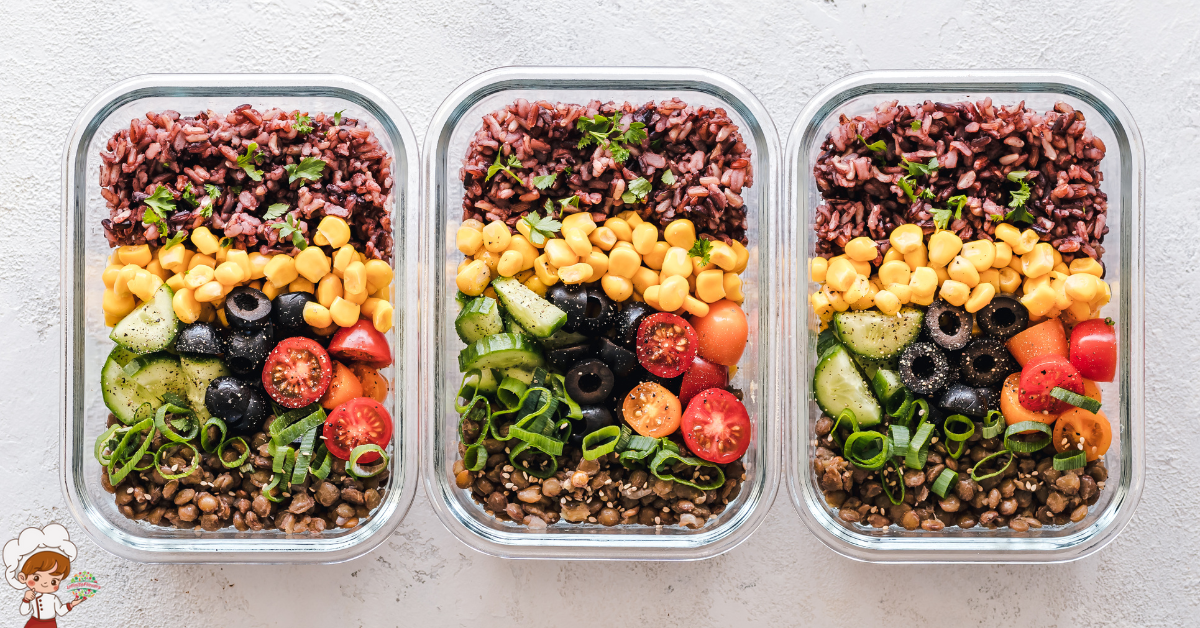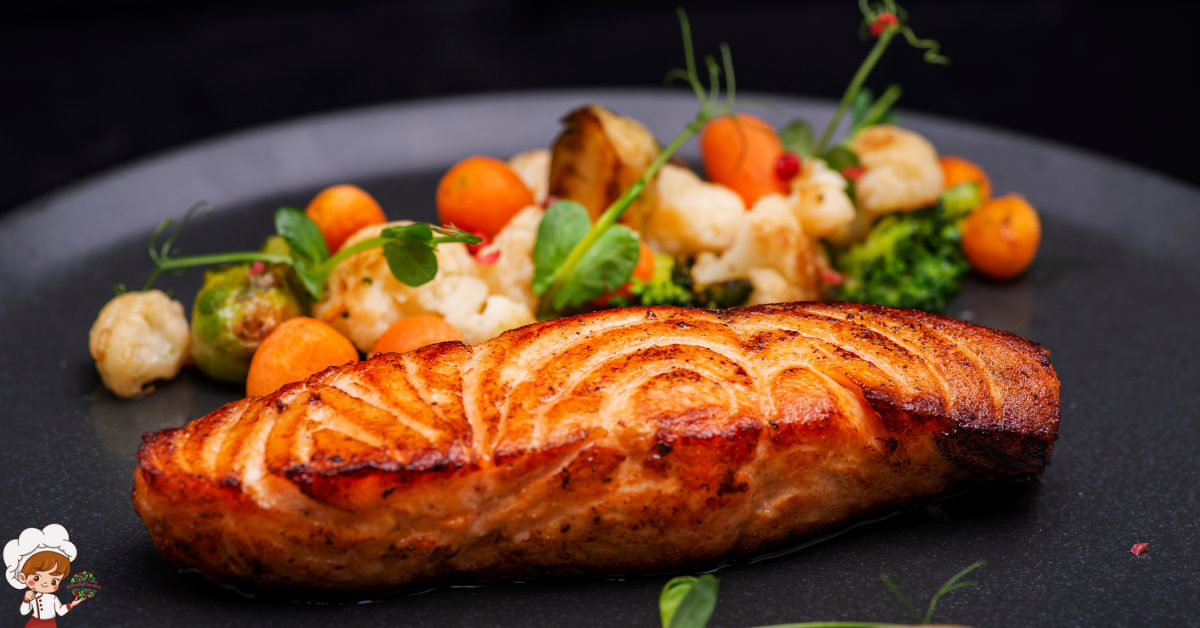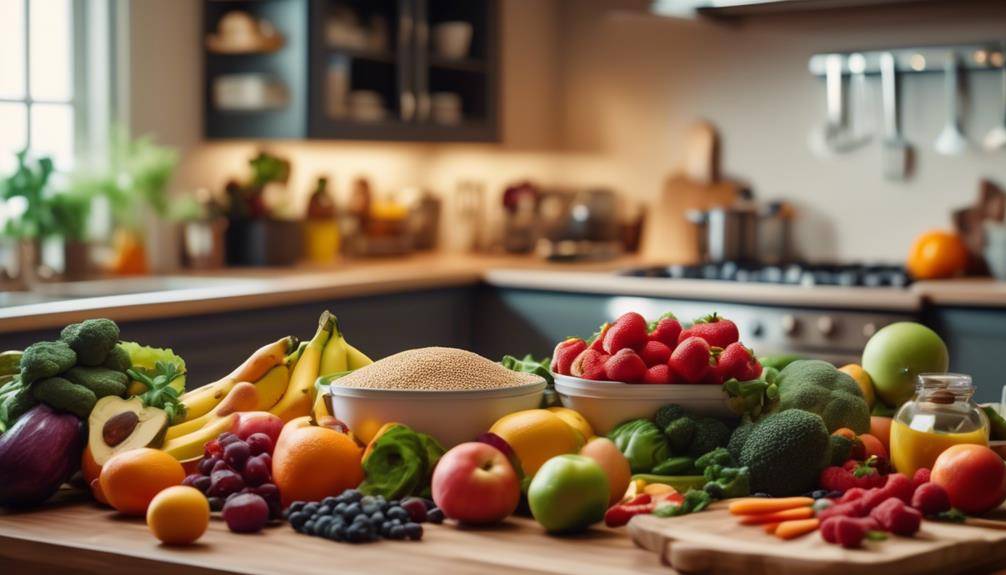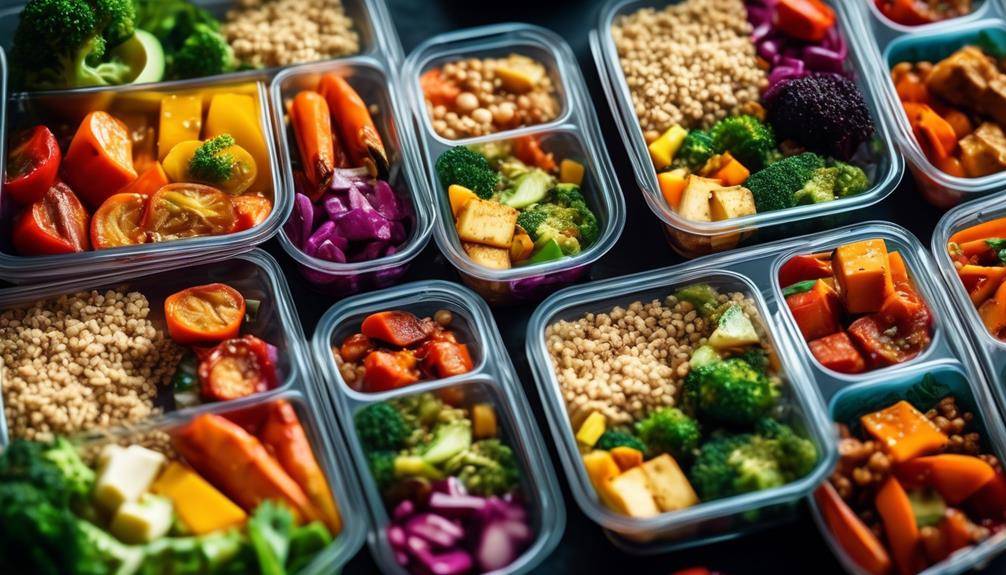5 Easy Ways To Prepare Gluten-Free Indian Cuisine

Prepare Gluten-Free Indian Cuisine; Are you someone who loves Indian cuisine but has to follow a gluten-free diet? Imagine being able to enjoy all your favorite Indian dishes without the worry of gluten. Well, the good news is that it’s totally possible. In this article, we will explore five easy ways to prepare gluten-free Indian cuisine. From choosing the right grains and flours to experimenting with alternative binders and thickeners, we will show you how to create delicious gluten-free versions of your favorite Indian recipes. So, let’s get started on this culinary journey and discover the secrets to enjoying gluten-free Indian cuisine at its finest.
Choose Gluten-Free Grains and Flours
When preparing gluten-free Indian cuisine, it is essential to choose the right grains and flours that are free from gluten to ensure a delicious and safe meal for everyone to enjoy. Whether you are looking for gluten-free bread options or gluten-free baking substitutes, there are plenty of choices available to create mouthwatering dishes.
When it comes to gluten-free bread options, there are several alternatives to traditional wheat bread. One popular choice is rice flour bread, which has a light and fluffy texture. It can be used to make a variety of Indian breads such as dosa, idli, and appam. Another option is quinoa flour bread, which is not only gluten-free but also packed with protein and nutrients. Quinoa flour can be used to make chapatis or rotis, adding a nutty flavor to your Indian meals.
In addition to bread options, there are also gluten-free baking substitutes that can be used in various Indian recipes. For example, instead of using wheat flour for making traditional sweets like gulab jamun or jalebi, you can use chickpea flour (also known as besan). This flour adds a unique taste and texture to the desserts. Another popular gluten-free baking substitute is almond flour, which can be used to make delicious cakes, cookies, and even traditional Indian sweets like barfi.
Experiment With Alternative Binders and Thickeners
To enhance the texture and consistency of your gluten-free Indian dishes, explore the use of alternative binders and thickeners that will take your recipes to the next level. When it comes to gluten-free cooking techniques, finding suitable alternatives can be a game-changer. Traditional Indian cuisine relies heavily on wheat-based binders and thickeners like wheat flour and semolina, but fear not! There are plenty of alternative binder substitutes that will give you the same results without the gluten.
One popular gluten-free binder is xanthan gum. Derived from fermented sugar, this white powder acts as a stabilizer and thickener, giving your dishes a smooth and cohesive texture. You can use it to bind together gluten-free flours when making chapatis or parathas. Another option is psyllium husk, which is made from the seeds of the plantago ovata plant. When mixed with water, it forms a gel-like substance that can be used as a binding agent in various recipes.
If you’re looking for a more traditional approach, gram flour (also known as besan) can be used as a binder in Indian cooking. Made from ground chickpeas, it adds a nutty flavor and a creamy texture to your dishes. Additionally, tapioca flour and arrowroot powder are excellent choices for thickening sauces and gravies, as they create a glossy and velvety consistency.
When experimenting with alternative binders and thickeners, it’s important to remember that each ingredient has its own unique properties. Be sure to follow recipe instructions and adjust the quantities accordingly. With a little practice and creativity, you’ll soon be able to master gluten-free cooking techniques and create gluten-free Indian dishes that are just as flavorful and satisfying as their gluten-filled counterparts.
Make Your Own Spice Blends and Sauces
Now that you’ve explored alternative binders and thickeners for your gluten-free Indian cuisine, it’s time to elevate your dishes even further by making your own spice blends and sauces. Creating your own spice blends not only allows you to customize the flavors to your liking but also ensures that you are using gluten-free ingredients. Plus, making your own homemade chutneys adds a fresh and vibrant touch to your dishes. Let’s dive into some easy and delicious spice blend recipes and chutney ideas.
One popular spice blend in Indian cuisine is garam masala. To make your own garam masala, simply combine ground cinnamon, cloves, cardamom, cumin, coriander, and black pepper. The aroma and warmth of this spice blend will add depth and complexity to your curries and rice dishes.
If you’re a fan of heat, try making your own chili powder. Toast dried red chilies, cumin seeds, coriander seeds, and black peppercorns, then grind them into a fine powder. This homemade chili powder will give your dishes a fiery kick and a burst of flavor.
Now, let’s talk about homemade chutneys. Mint chutney is a classic accompaniment to many Indian dishes. Blend fresh mint leaves, cilantro, green chilies, lemon juice, and salt together until smooth. This tangy and refreshing chutney pairs perfectly with samosas, kebabs, and grilled meats.
Another delicious chutney to try is tamarind chutney. Soak tamarind pulp in water, then strain and mix it with jaggery, dates, ginger, cumin, and chili powder. This sweet and tangy chutney is a fantastic dipping sauce for pakoras, chaat, and bhajis.
Incorporate Plenty of Fresh Vegetables and Legumes
Incorporate an abundance of fresh vegetables and legumes to infuse your gluten-free Indian cuisine with vibrant colors, textures, and nutritious elements. By incorporating protein-rich ingredients and trying new cooking techniques, you can create delicious and healthy dishes that will satisfy your taste buds. Here are some easy ways to incorporate plenty of fresh vegetables and legumes into your gluten-free Indian recipes:
- Experiment with different types of legumes: From chickpeas to lentils, there are a variety of legumes that can add a rich and hearty flavor to your dishes. Try using them in curries, soups, or even salads to add a protein boost to your meals.
- Add a rainbow of vegetables: Indian cuisine is known for its vibrant colors, and incorporating a variety of vegetables can not only make your dishes visually appealing but also add a range of flavors. From green spinach to orange carrots and red bell peppers, the possibilities are endless.
- Try stir-frying: Stir-frying is a quick and easy cooking technique that allows you to retain the nutrients and flavors of the vegetables. Heat up some oil in a pan, toss in your favorite vegetables, and cook them on high heat until they are tender yet still crisp. Add some spices and herbs to enhance the flavors.
- Make vegetable-based dips and spreads: Instead of relying on store-bought sauces and spreads, make your own using fresh vegetables. Blend together ingredients like roasted eggplant, tomatoes, and onions to create flavorful dips that can be enjoyed with gluten-free bread or crackers.
Incorporating plenty of fresh vegetables and legumes into your gluten-free Indian cuisine not only adds a burst of flavors but also ensures that you are getting a nutritious meal. So, get creative in the kitchen and explore the wonderful world of Indian flavors!
Get Creative With Gluten-Free Indian Street Food Recipes
Get ready to tantalize your taste buds with a wide array of mouthwatering gluten-free Indian street food recipes. When it comes to gluten-free Indian snacks, there are plenty of traditional options that are both delicious and safe to eat. Street food is an integral part of Indian culture, and it offers a unique culinary experience that you don’t want to miss out on.
One popular gluten-free Indian street food dish is bhel puri. Made with puffed rice, onions, tomatoes, and a tangy tamarind chutney, this snack is bursting with flavor. It’s the perfect combination of sweet, sour, and spicy, making it a favorite among locals and tourists alike.
Another must-try gluten-free street food is vada pav. This Mumbai-style burger features a deep-fried potato patty served in a gluten-free bun. The patty is seasoned with a blend of spices and served with a side of spicy chutney. It’s a filling and satisfying snack that will leave you craving for more.
For those with a sweet tooth, be sure to try jalebi. These deep-fried spiral-shaped treats are made from a gluten-free batter of fermented rice and lentils. They are then soaked in a sugar syrup, giving them a sticky and sweet flavor. Jalebi is a popular dessert in India and is often enjoyed during festivals and special occasions.
When it comes to gluten-free Indian street food, the options are endless. From crispy pakoras to spicy chaat, there is something for everyone. So, get creative in the kitchen and explore the world of gluten-free Indian street food. Your taste buds will thank you.
Prepare Gluten-Free Indian Cuisine; Frequently Asked Questions
Can I Use Regular Wheat Flour in Gluten-Free Indian Cuisine?
You can’t use regular wheat flour in gluten-free Indian cuisine. If you’re looking for alternatives, try using rice flour, chickpea flour, or almond flour. These will give your dishes the right texture and flavor.
What Are Some Common Gluten-Free Grains and Flours Used in Indian Cooking?
Looking for alternatives to wheat flour in gluten-free Indian cooking? There are plenty of options! Try using rice flour, chickpea flour, or millet flour for a delicious gluten-free twist on traditional Indian breads.
How Can I Make My Own Gluten-Free Spice Blends and Sauces?
To make your own gluten-free spice blends and sauces, start by modifying traditional Indian recipes to be gluten-free. Use gluten-free grains and flours for breads and rotis. Experiment with different spices and flavors to create delicious gluten-free dishes.
Are There Any Specific Vegetables and Legumes That Work Best in Gluten-Free Indian Dishes?
To make gluten-free Indian dishes flavorful, use vegetables like cauliflower and spinach, and legumes like chickpeas and lentils. The best gluten-free substitutes for wheat flour are rice flour and chickpea flour.
What Are Some Popular Gluten-Free Indian Street Food Recipes That I Can Try at Home?
Looking to try some popular gluten-free Indian street food recipes at home? You’re in luck! There are plenty of options to choose from, including traditional Indian gluten-free dishes that are full of flavor and easy to prepare. Let’s get cooking!
Conclusion
In conclusion, preparing gluten-free Indian cuisine doesn’t have to be difficult or time-consuming. By choosing gluten-free grains and flours, experimenting with alternative binders and thickeners, making your own spice blends and sauces, incorporating fresh vegetables and legumes, and getting creative with gluten-free Indian street food recipes, you can enjoy delicious and authentic Indian dishes without the worry of gluten. So go ahead, explore the rich flavors and vibrant colors of gluten-free Indian cuisine and satisfy your taste buds in a healthy and satisfying way.








